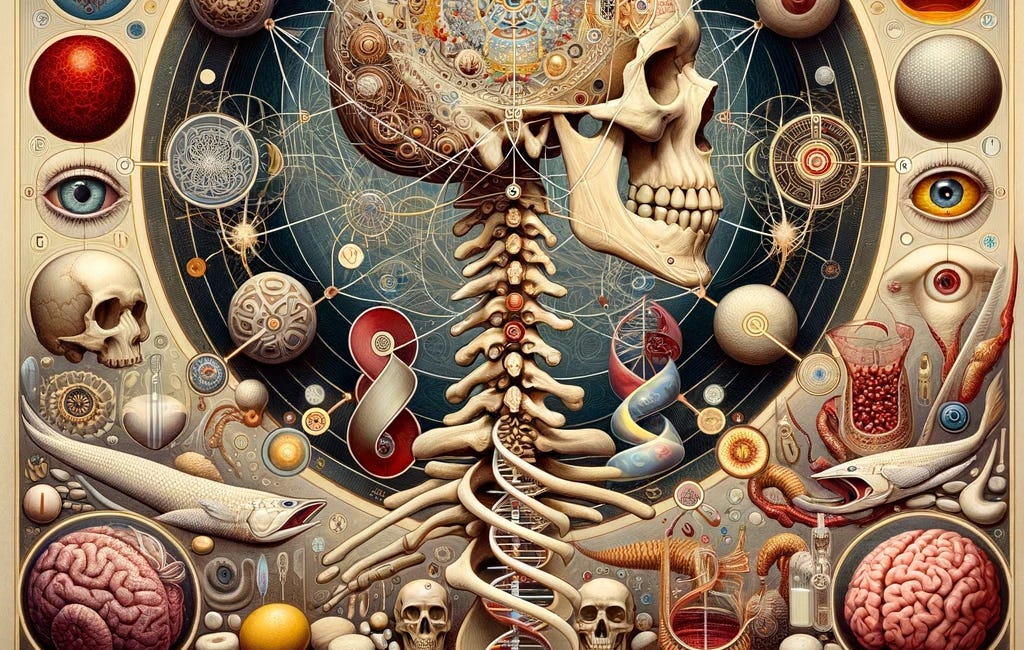In the shadows of human consciousness lies an Asuric force, a manifestation of dark, chaotic energy that thrives on deception and manipulation. As ancient as humanity itself, this force operates through lies, each one building upon the last, creating a labyrinth of falsehoods that ensnare the minds of individuals and societies alike. The saying "a lie begets a lie" encapsulates the essence of this phenomenon, highlighting the exponential growth of deception and its profound impact on the human psyche and social structures.
The Nature of Asuric Forces
Asuric forces, drawn from the ancient Sanskrit term "Asura" meaning demon or anti-god, represent the embodiment of malevolent chaos. In Hindu mythology, Asuras are powerful beings that oppose the gods (Devas) and embody darker aspects of existence such as greed, anger, and deceit. These forces are not merely external entities but also symbolize internal psychological states that lead individuals astray from truth and righteousness.
The Asuric force thrives on falsehood, using it as a tool to distort reality and manipulate perception. This force understands that a single lie, once told, necessitates further lies to maintain the illusion. Each subsequent lie adds complexity to the original falsehood, creating an intricate web that becomes increasingly difficult to unravel.
Psychological Mechanisms
From a psychological perspective, the process by which a lie begets a lie can be understood through cognitive dissonance theory. Cognitive dissonance occurs when an individual experiences psychological discomfort from holding two conflicting beliefs or engaging in behavior that contradicts their beliefs. To alleviate this discomfort, individuals often resort to further lies or self-deception to justify their initial falsehood.
For instance, when a person tells a lie, they may experience internal conflict due to the discrepancy between their action and their self-concept as an honest individual. To resolve this conflict, they might tell additional lies to reinforce the original deception and protect their self-image. Over time, this leads to a complex network of interrelated falsehoods, each reinforcing the others and creating a robust yet fragile edifice of deception.
Sociological Implications
The sociological implications of the Asuric force and the principle that a lie begets a lie are profound. Lies and deception can erode the foundational trust upon which societies are built. In political and social contexts, leaders who engage in deceitful practices often find themselves trapped in a cycle of continuous falsehoods to maintain their power and authority. This can lead to widespread corruption, social unrest, and the eventual collapse of societal structures.
Moreover, the proliferation of misinformation and fake news in the digital age exemplifies how a lie can propagate and multiply at an unprecedented rate. Once a false narrative gains traction, it spawns a cascade of additional falsehoods as individuals and groups seek to support and expand upon the original lie. This creates a self-reinforcing feedback loop that distorts public perception and undermines the collective ability to discern truth from falsehood.
Mythological and Cultural Narratives
Mythological and cultural narratives from around the world often explore the theme of lies begetting lies and the ensuing chaos. For example, in Greek mythology, the story of the Trojan Horse illustrates how a single act of deception can lead to catastrophic consequences. The Greeks' false gift to the Trojans, a colossal wooden horse hiding soldiers, led to the fall of Troy and the unraveling of its civilization. This tale underscores the destructive potential of deceit and the way lies can multiply and magnify their impact over time.
In modern literature, George Orwell's "1984" presents a dystopian vision of a society where lies are institutionalized, and truth is systematically distorted. The Party's continuous rewriting of history and propagation of false narratives exemplifies how lies can create a pervasive and oppressive environment where reality itself becomes malleable.
Ethical Considerations and Countermeasures
While the Asuric force represents the dark potential of lies and deception, it also highlights the importance of truth and integrity. Ethical considerations demand that individuals and societies strive to uphold truth and transparency, recognizing that deception, once initiated, can spiral out of control.
Countermeasures to combat the proliferation of lies include fostering critical thinking and media literacy, promoting transparency and accountability in leadership, and encouraging open dialogue and honest communication. By addressing the root causes of deception and creating environments where truth is valued and upheld, it is possible to mitigate the influence of Asuric forces and prevent the cascade of lies that they engender.
Conclusion
The Asuric force and the principle that a lie begets a lie serve as powerful reminders of the destructive potential of deception. By understanding the psychological mechanisms and sociological implications of lies, individuals and societies can better navigate the complexities of truth and falsehood. Ultimately, the pursuit of truth and integrity stands as a bulwark against the encroaching darkness of Asuric forces, illuminating the path toward a more just and enlightened world.
Fable: The Sorceress and the Demon
Once upon a time, in a hidden mansion deep within a dark forest, lived a powerful sorceress named Amara. She was revered and feared by many for her knowledge of ancient magic and her ability to manipulate the minds of those around her. Driven by a desire for ultimate power, Amara sought to summon a mighty demon from the realm of shadows.
After years of preparation, Amara finally succeeded in her quest. With a flash of light and a roar of thunder, the demon appeared before her, its eyes burning with fiery malice. Amara commanded the demon to obey her, and for a time, it did. Her power grew, and her followers multiplied, drawn by the allure of the demon’s strength.
But as the days passed, Amara realized that the demon was testing her control. It whispered dark secrets and sowed seeds of discord among her followers. The once-loyal disciples began to question her authority, and the mansion was plagued by strange and terrifying phenomena.
Despite her efforts to maintain control, the demon’s influence spread like a shadow, corrupting all it touched. Amara’s heart grew cold, and she became more ruthless, willing to sacrifice anything and anyone to retain her power. Her followers, once united in their devotion, were now consumed by fear and mistrust.
One fateful night, rival sorcerers and brave hunters converged upon the mansion, determined to destroy the demon and end Amara’s reign. In the chaos of battle, Amara struggled to contain the demon’s wrath, but her strength was failing. As the walls of her sanctuary crumbled around her, she realized too late that the power she had sought had become her undoing.
The moral of the story is clear: those who seek power through deceit and darkness will ultimately be consumed by the very forces they seek to control.
Treatise: Despotic Thirst for Power at Any Cost
The pursuit of power is a fundamental aspect of human nature, driving individuals to achieve great heights and, at times, commit great atrocities. When this pursuit becomes an all-consuming obsession, unbounded by ethical considerations or moral constraints, it gives rise to despotism—a form of rule characterized by absolute power and often maintained through fear and deception.
Dr. Amara Velatrix’s story is a quintessential example of despotic thirst for power at any cost. Her journey from a learned scholar to a manipulative sorceress highlights the dangers inherent in the unrestrained quest for dominance. The summoning of an Asuric entity represents the pinnacle of her ambitions, a symbol of her willingness to embrace any means necessary to achieve her ends.
At the heart of despotism lies a fundamental distrust of truth. Despots, in their quest for unchallenged authority, often resort to lies and manipulation, creating an environment where deception becomes the norm. This approach, while effective in the short term, is inherently unstable. Lies require constant reinforcement and expansion, leading to a complex web of falsehoods that eventually becomes unsustainable.
The psychological impact of such a regime is profound. Leaders who rely on deception must continuously guard against exposure, fostering an atmosphere of paranoia and mistrust. Their followers, subjected to constant manipulation, become increasingly disoriented and disillusioned. The resulting social fragmentation weakens the very foundation of the despot’s power, creating a volatile situation prone to collapse.
From a sociological perspective, despotic regimes often face significant external threats. Rivals, sensing the inherent instability of a power structure built on lies, are quick to exploit weaknesses. Internal dissent grows as the gap between the regime’s propaganda and reality becomes apparent. The culmination of these pressures typically results in a dramatic and often violent upheaval.
In conclusion, the tale of Dr. Amara Velatrix serves as a cautionary narrative about the perils of pursuing power without ethical constraints. It illustrates the destructive potential of deception and the inevitable downfall that accompanies the despotic thirst for control. True power and enlightenment, it suggests, can only be achieved through integrity and a commitment to truth, values that stand in stark opposition to the corrupting influence of Asuric forces.
The Global Harmony Initiative
"Know them not by words but by deeds: consolidating power, eliminating dissent, and shaping public perception." Story: The Global Harmony Initiative The Birth of the Alliance Dr. Amara Velatrix had always understood the potential of aligning with powerful political figures to extend her reach. Her opportunity came in the form of Senator Adrian Crowley, a c…
Dear Sovereign Human
Natural Law when it resonates with Souls Law becomes Spiritual Law This is the Law to follow to make the direct connection between human and soul under a combined Spiritual LawThanks for reading Who, what, where am I?! Subscribe for free to receive new posts and support my work.
The Geometry of Consciousness
The Geometry of Consciousness represents a profound and intricate perspective on the nature of reality. This concept posits that the structure of consciousness and our physical form are deeply interconnected, with specific emphasis on the spinal structure and the human skull. In this introductory article, we delve into the f…
The Temple of the Heart
Harmonizing the Temple of the Heart: The Intersection of Thoughts, Emotions, and Quantum Healing Embracing the heart as a temple of healing, this article explores the profound interconnectedness between thoughts, emotions, the physicality of blood, mitochondria, and DNA, and their collective influence on our well-being. This exploration is rooted in the …







